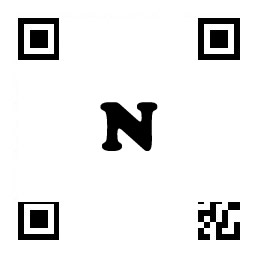- 商品介绍
- 规格参数
- 包装参数
|
规格 |
|
| Assay: | Protein Quantitation Assay |
| Label Type: | Unlabeled |
| Substrate Properties: | Protein-Based Substrate |
| Target Enzyme: | Kinases (Multiple), Phosphodiesterases, ATPases, GTPases, Phosphatases |
| Technique: | Pull-Down |
| Description: | Pierce Active Cdc42 Pull-Down and Detection Kit |
| Format: | Spin Column |
| Kit Contents: | Anti-Cdc42 Antibody, 5 units, 300µL |
| Substrate Type: | GTPase Substrate |
| Detection Method: | Western Blot, Chemiluminescent |
|
储存 |
|
|
• GST-Pak1-RBD Fusion Protein, 1 vial • Anti-Cdc42 Antibody, 5 units, 300 µL • Glutathione Agarose Resin, 3 mL • GDP (100X), 50 µL • GTPyS (100X), 50 µL • SDS Sample Buffer (2X), 1.5 mL • Lysis/Binding/Wash Buffer (1X), 100 mL • Spin Cups, 30 cups • Collection Tubes, 90 tubes See product manual for storage conditions of individual components. |
|
描述 |
The Thermo Scientific Pierce Active Arf1 Pull-Down and Detection Kit is a complete kit for selective enrichment and detection of GTP-bound Arf1 GTPase through specific protein interaction with the GGA3 protein-binding domain.
The Active Arf1 Pull-Down and Detection Kit includes purified GST-GGA3 protein-binding domain (PBD), glutathione agarose resin, positive and negative controls (GTPγS and GDP, respectively), lysis/binding/wash buffer, anti-Arf1 primary antibody, sample buffer, spin columns and collection tubes. The kit was validated using lysates from MDCK cells, a cell line that is known to have robust Arf1 activity.
Features of the Active Arf1 Pull-Down and Detection Kit:
• Highly sensitive and accurate—optimized reagents, specific anti-Arf1 antibody and Western blot procedure ensure accurate controls and semi-quantitative results
• Validated—functionally tested for Arf1 detection to ensure quality and performance
• Compatible—effective with a variety of cell types from mouse, rat and human sources
Applications:
• Follow activation of Arf1 GTPase during cell differentiation, migration, division and cytoskeletal rearrangement
• Study the activation of Arf1 during the assembly of coat proteins onto budding vesicles or trans-golgi network and endosomes
• Monitor Arf1 activity after stimulation with growth factors
• Monitor Arf1 activity after small molecule inhibitor treatment
The Active Arf1 Pull-Down and Detection Kit was validated for function and specificity of the active Arf1 enrichment method using cell lysates treated with GTPγS to activate endogenous Arf1 and compared to lysates treated with GDP to inactivate the small GTPase. GTPγS treatment traps Arf1 in the GTP-bound form (active), resulting in a strong signal when endogenous Arf1 is present. GDP treatment pushes Arf1 into the GDP-bound state (inactive), resulting in minimal or no signal, regardless of Arf1 protein levels. The kit is optimized for Western blot detection using an HRP-conjugated secondary antibody (Goat Anti-rabbit IgG, Part No. 31460) and Thermo Scientific SuperSignal West Pico Chemiluminescent Substrate (Part No. 34080). The kit contains sufficient components for 30 pull-down assays.
Arf1 Background:
ADP ribosylation factor proteins 1-6 (Arfs) are members of the Ras family of small GTPases. Although structurally similar, the cellular roles of Arf1-6 are different from the other Arf family members; their endogenous roles are not ADP ribosylation, but rather regulation of heterotrimeric G proteins. The Arf proteins can be divided into three classes: Class I—Arf 1-3; Class II—Arf 4,5; Class III—Arf6. Class I and II Arfs are associated with trans-Golgi network (TGN) and are involved in recruiting effector proteins to the Golgi membrane and forming vesicles. Unlike other GTPases, Arf GTPases are modified by myristoylation at the amino-terminus to allow insertion into the membrane. The Class III protein Arf6 is associated with the plasma membrane and is involved in vesicle formation at the plasma membrane, vesicle recycling and remodeling of the actin cytoskeleton.
Although the Arf GTPases are expressed in all cells, Arf1 is the most abundant, active and best-characterized. Arf1 recruits its effectors, including coatomer and clathrin adaptor complex (AP), to the Golgi for vesicle formation and budding. After recruitment, Arf1 maintains the coat proteins on the membrane until the vesicle is formed. Arf1 then interacts with its effector resulting in the release of Arf1 from the membrane and vesicle budding. The golgi-localized γ-ear-containing Arf (GGA) effector binding proteins contain an amino-terminal VHS domain, a GGA homology domain (GGAH), a proline-rich linker region and a carboxy-terminal γ-ear adaptin homology domain (AGEH). The VHS domain interacts with cytoplasmic domains for receptor sorting, the GGAH domain binds activated Arf, the proline-rich region interacts with clathrin and the AGEH domain interacts with cytosolic proteins. Through mutational studies, the GGAH domain has been shown to be sufficient to bind GTP-bound Arf, and Arf1 binds all three GGA effector proteins. The association of the GGA proteins with the TGN and with the plasma membrane is regulated by the Arf.
More Product Data
• Measure activation of small GTPases via their specific downstream effectors
| 长度(mm) | |
| 宽度(mm) | |
| 高度(mm) | |
| 重量(kg) |
























 微信小程序
7X24小时在线咨询
微信小程序
7X24小时在线咨询